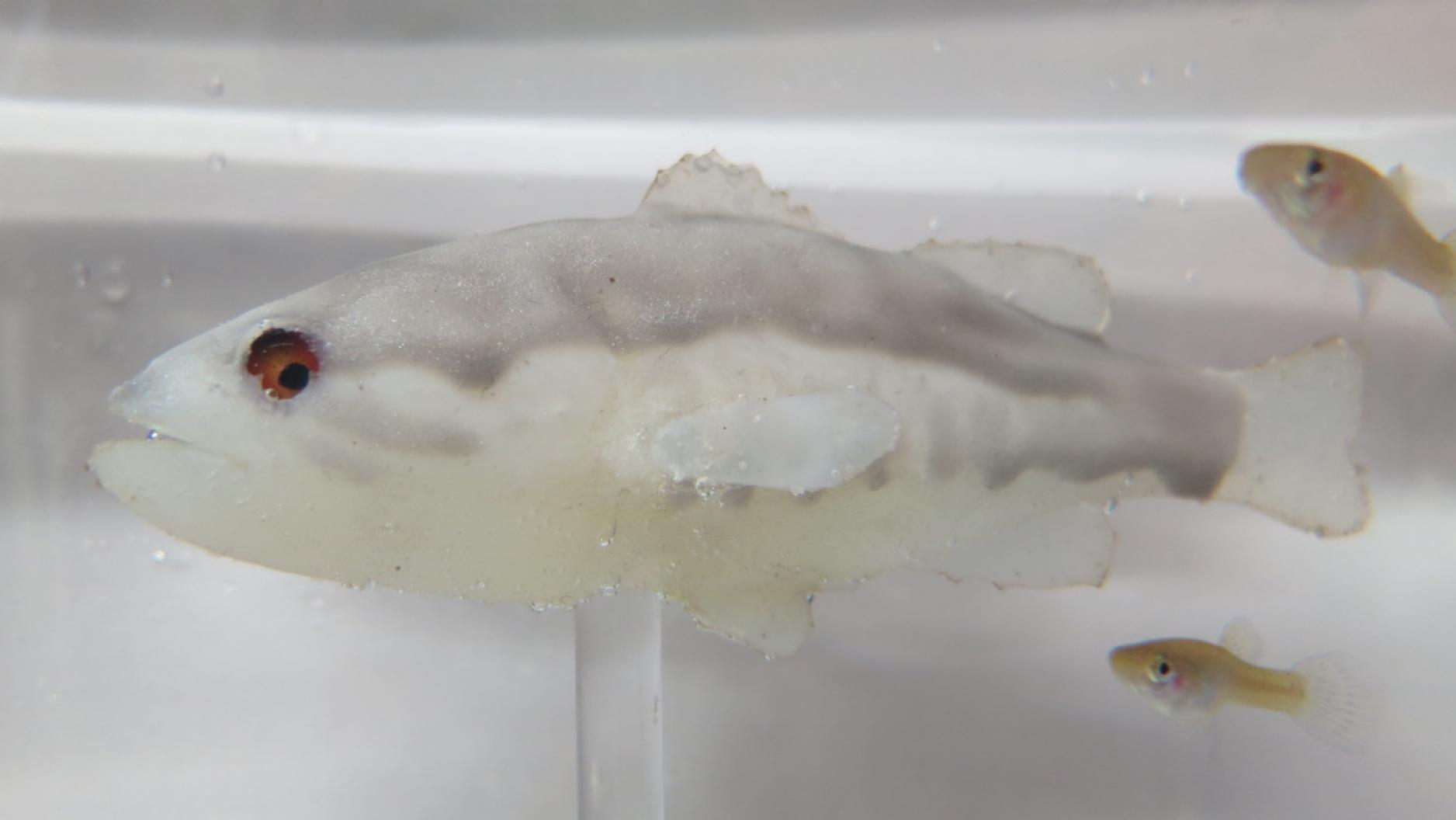Controlling an invasive species with robotic fish / Controllo di una specie invasiva con pesci robot
Controlling an invasive species with robotic fish / Controllo di una specie invasiva con pesci robot
Segnalato dal Dott. Giuseppe Cotellessa / Reported by Dr. Giuseppe Cotellessa

A team of researchers from New York University’s Tandon School of Engineering and the University of Western Australia are using robotic fish to chase off invasive fish species.
To prevent invasive fish species from reproducing and overwhelming waterways, the team developed a replica of a robotic largemouth bass to stress invasive mosquitofish and rob them of the opporunity to breed. Mosquitofish are largely responsible for decimating native fish and amphibian populations in freshwater lakes and rivers around the world.
Led by NYU Tandon School of Engineering professor Maurizio Porfiri, the teams introduced the biomimetic robotic largemouth bass — a primary predator of mosquitofish — to groups of mosquitofish in the lab for 15-minute sessions once a week for six consecutive weeks. During those sessions, the robotic fish displayed a range of behaviors, including aggression. Those groups with greater exposure to the aggressive robotic fish demonstrated greater stress responses, such as fear, by freezing, hesitation, avoidance and swimming erratically, even when exposure to the robotic fish was momentary.
The mosquitofish were anesthetized once a week so that the team could measure the weight and length of the fish. The researchers noted that the mosquitofish with greater exposure to the aggressive robotic fish weighed less, suggesting that their energy reserves were depleted, and thus less likely to devote energy to reproduction, according to the team.
Going forward, the team believes it needs to take the testing into the wild, but considers the method potentially more effective than current methods for controlling invasive species, such as introducing toxicants or trapping the species, which tend to fail or harm local wildlife.
ITALIANO
Per impedire alle specie ittiche invasive di invadere i corsi d'acqua, il gruppo ha sviluppato una replica di una spigola robotica per stressare la gambusia invasiva e derubarli dell'opportunità di riprodursi. Le gambusie sono in gran parte responsabili della decimazione dei pesci autoctoni e delle popolazioni di anfibi nei laghi di acqua dolce e nei fiumi di tutto il mondo.
Guidati dal professor Maurizio Porfiri della NYU Tandon School of Engineering, i gruppi hanno introdotto il pesce robotico biomimetico - un predatore primario di gambusie - a gruppi di gambusie in laboratorio per sessioni di 15 minuti una volta alla settimana per sei settimane consecutive. Durante quelle sessioni, il pesce robotico mostrava una serie di comportamenti, inclusa l'aggressività. Quei gruppi con una maggiore esposizione al pesce robot aggressivo hanno dimostrato maggiori risposte allo stress, come la paura, congelando, esitando, evitando e nuotando in modo irregolare, anche quando l'esposizione al pesce robot era momentanea.
Le gambusie venivano anestetizzate una volta alla settimana in modo che il gruppo potesse misurare il peso e la lunghezza del pesce. I ricercatori hanno notato che la gambusia con una maggiore esposizione al pesce robot aggressivo pesava meno, suggerendo che le loro riserve di energia erano esaurite e quindi con meno probabilità di dedicare energia alla riproduzione, secondo il gruppo.
In futuro, il gruppo ritiene che debba condurre i test in natura, ma considera il metodo potenzialmente più efficace degli attuali metodi per il controllo delle specie invasive, come l'introduzione di sostanze tossiche o l'intrappolamento delle specie, che tendono a fallire o danneggiare la fauna selvatica locale.
Da:



Commenti
Posta un commento